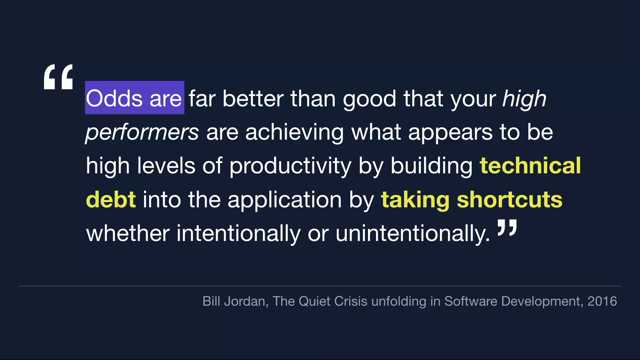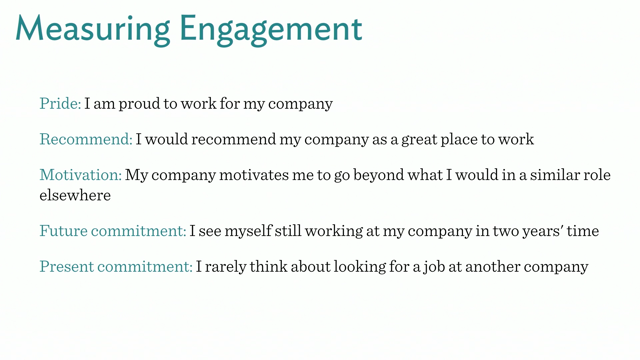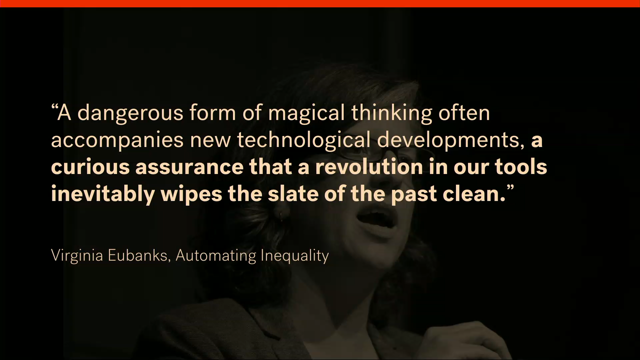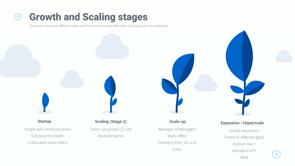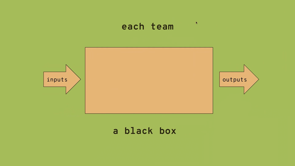From Mission to Strategy, going over Roadmap and OKRs.
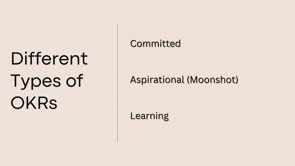
Mission to Strategy: An Overview
Today's talk is from mission to strategy. Going over. OKRs and roadmap. Lots of buzzwords mission strategy OKRs. My hope today is to bring some clarity around the real meaning of those terms.
The Mission Statement for Your Team
You need to define a mission statement for your team. The mission is really the area of focus in a road trip. Connect the mission statement of your group also with the mission statements of the company. Main takeaway here is that make the mission specific to your group.
What is the Vision Statement for your Company?
First you need to know the vision statement for your company. In the analogy I made before, the vision is the destination. And basically those two concepts serve as inputs for what's coming next, which is strategy.
What is a Strategy in a Company?
As I mentioned before, vision and mission, they serve as input for strategy. And strategy is really how you get to your destination. A good strategy really helps your team and yourself focus on a path to achieve an outcome.
The Life Cycle of Strategy
There are kind of like four different stages when you talk about strategy. The first one is forming. Alignment is basically about communicating your strategy to your, to your team, to everyone. It's really important to repeat concepts all the time.
Strategy and Execution: The Value of OKRs
OKRs are a framework that helps with strategy, implementation, execution and OKRs stands for objective key results. There are different types of OKRs depending on the confidence level that you have. You want to monitor OKRs through the quarter or through the year.
Initiatives and OkRs
You need to think about strategic objectives and also what your team is going to really build. Tactics are really like the projects with deliverables that your team ships. OKRs really should drive the initiatives for your team. Roadmaps are really complementary concepts.
4 Step Strategy Assessment
Now, the fourth stage of the strategy lifecycle is assessment. Connecting mission vision strategies with OKRs and roadmap is that it really helps you to bring the focus for yourself and for the team. Investing time on executing strategy is one of the most powerful things you can do for yourself, your team and your company.
Sebastiano Armeli: Thank you for the intro, Craig.
So I'm Sebastiano Armeli, and today's talk is from 'mission to strategy', going over OKRs and roadmap.
Lots of buzzwords, 'mission', 'strategy', 'OKRs'.
All terms that we use a lot, I think in meetings on a daily basis, but I feel like often we don't use them correctly.
So my hope today is to bring some clarity around the real meaning of those terms and really how they connect to each other.
And I'm very excited to be here today because I get to share some of the lessons I learned through my leadership journey.
And I, I've experienced different ways of executing strategy and also processes around focused teams, at companies as Craig mentioned before, like Spotify, Snap, PayPal, and now Pinterest.
So I think I've learned a few things that work well and how to optimize, the process.
So specifically, We'll we'll go through initially the strategy inputs, mission and vision, and then we'll dig more into strategy and strategy lifecycle.
So let's start with the mission.
So you need to define a mission statement for your team as a first step.
Through this talk, I'll, I'll make an analogy with, a road trip, which kind of describe like the process that I'll, talk about.
So the mission is really the area of focus in a road trip that contains like the starting point and the end point.
And really initially you need to learn the mission statement for your company.
And really this is the mission statement for example, for Pinterest, which is the company I work for.
And I'll tell you like the, process I took to to create the mission statement for my group, which is a shopping experience, so the UI, all the client and API for shopping at Pinterest.
So I basically, in the mission statement, I wanted to explain what my group does and why my group exists and specifically, I wanted to say that I work on the experience side, that our group works on the experience side and also in shopping.
So I say 'find and purchase products', but very important is to connect the mission statement of your group also with the mission statement of the company.
And that's why in the mission statement of my group, I say 'they feel like they're made for them' because I want to connect with the overall Pinterest mission, which is like inspirational.
So the, overall mission statement for my group was to delight pinners with the experience that helps them find and purchase product.
They feel like they're made for them.
So in that way, I wanted to collect the, focus on what we do, why we exist, and the connection to the company mission.
So really important that you define this so that everyone in, the team and also outside, they really have clear why your team exists and what we do.
So the main takeaway here is that make the mission specific to your team.
Now let's, now your turn.
Why don't you take your phone out and write down what the mission is for your team?
Let's take a few seconds and, do that.
Don't, freak out if you don't remember the mission statement of your company.
Just try to think about if your team's mission align with your company's mission and what really why your company why your group exists.
We can also chat later.
You can stop me later and we can talk about the mission statement you wrote.
Okay.
Now second strategy input is vision.
In, the analogy I made before, the vision is the destination.
It's basically where you want to get.
So again, first you need to know the vision statement for your company.
So this is like the vision statement for Pinterest.
So to become the world's first inspiration to realization engine.
And, really you wanna find how your group participates into the vision for your company.
So for my group, really I wanted to connect the realization part with what my group does, which is shopping.
Hence the, vision statement for my group is 'to help pinners realize their inspiration through shopping'.
Oh, by the way, I'm using the term 'pinners' because internally that's how we define Pinterest users.
So really again with the vision statement, you wanna bring focus and also align with the over company or overarching org that you belong to.
So the main takeaway here is 'vision is the destination'.
So the mission is the area of focus and the vision is the destination.
And basically those two concepts serve as inputs for what's coming next which, is strategy.
Now your turn again take out your phone and write down the, vision statement for your team and think about basically the role that your team plays in your company's vision.
I know that to create a vision and mission statement, it takes it takes a bit.
So I don't know.
I mix.
I imagine it's a challenge to write down in in a few seconds, but okay.
Now let's move on to really strategy.
So as I mentioned before, vision and mission, they serve as inputs for strategy.
And strategy is really the how, you get to your destination.
So having the area of focus in a map in the destination, basically the set of directions that you follow to get to that destination is the strategy.
Now, I'll tell you a story that happened to me like a few years ago.
So I was chatting with an engineering leader at a previous company and I asked him, what's the strategy for your org?
And the answer was, 'our strategy is to reach 250 million daily active users by end of the year'.
Now, this is not really a strategy.
This is like a goal.
Because a strategy is really the description of how you get to a, goal.
And this is a great goal.
But main takeaway is strategies are not goals.
Strategies are set of cohesive hypotheses to achieve an outcome.
So it's basically a set of directions that you put in place to get somewhere to get to an outcome.
And of course, like in your org, team, whatever you lead you do have multiple outcomes that you need to achieve.
So you have multiple strategies.
So there is not only one strategy.
You might have strategies that are also nested, like a company strategy will have multiple department ones.
And also team will have different strategies that bubble into the organization or department.
And also you might have different type of outcomes.
So you might have product outcomes, you might have engineering, operational ones.
So in the next examples I will focus on engineering strategies since we are all engineering leaders here.
So for example, for my group, the engineering outcome was at the beginning of the year to build user experiences perceived as reliable and responsive by pinners.
So this was like the destination for the engineering side and the strategy that we define was to reduce the number of bugs and improve the performance of page load.
So those are like the two things that we picked in terms of like how we were gonna get to this goal.
I think one thing that is helpful to keep in mind is that if you think about alternatives ways to get to the same goal, that means that you're defining a strategy.
And I think a good strategy really helps your team and yourself focus on, a path to achieve an outcome.
So like in the previous case, mentioning like the two things that we're gonna focus on really helps to say, okay, those are the, two things we need to prioritize this year to achieve the that outcome.
Now let's look at the life cycle of strategy.
So there are four different stages when you talk about strategy.
So the first one is forming.
So basically it's the stage where you define strategy.
So in this phase, you really want to consider the, environment that you have around you-competitors.
You need to be aware of the problems that you're gonna solve.
So a framework that is popular is the 'Jobs to be Done'.
At Pinterest we use this framework a lot to express like the, user needs . And then from that you need to identify the solutions.
So the strategic objectives that they will address those user needs.
And then I think part of this definition of strategy, you wanna consider like the resourcing, like the people that you have and also the capabilities that you have in your team.
Referring back to the, again, to the example before, so the really, the user need that we had in my group was to again, to improve the reliability and responsiveness of the user experience.
And the two strategic objectives were reducing number of bugs and improving page perform.
That's how really it maps to the strategy forming stage.
Now second stage alignment.
Alignment is basically about communicating the, your strategy to your org, to your team, to everyone to make sure that everyone really understands what you're talking about.
And that comes with one-on-ones, comes with all hands, comes with your manager one-on-ones and comes with lots of repetition.
I think one of the mistakes I did in the past was that we are going through strategy and I was thinking one time and then I was thinking, okay, I don't wanna repeat it multiple times because people already listened to it.
But really people are busy, they have lots of things on their plate and I think it's really important to repeat concepts all the time.
And also helps you in flesh out really details and why you're doing something, 'cause people will have questions.
So it also helps you in reflecting.
Now third stage strategy execution.
So now I, wanna dig more into this stage here because strategy execution, we spend lots of time as engineering leaders in this stage.
And it's basically about how you're going to execute on the strategic objectives.
So really if you think about the, previous analogy, now it's when you are you're really driving towards a destination.
So you're following a GPS in in your road trip.
So it's not a, you're not in a planning stage where you have the hypothesis, you're really driving towards a location.
And that's where OKRs come into place.
'Cause OKRs are a framework that helps with strategy, implementation, execution, and OKRs stands for 'objective key results'.
So you really wanna, through OKRs, to explain the, what you're gonna do and how you're gonna measure what you're gonna do.
So really the way to synthesize OKRs is 'I will do an objective as measured by a set of key results'.
That's really an easy way to think about OKRs.
And OKRs were invented really by Andy Grove at Intel, but they got popular through I think this book but not only especially Google use it a lot, and John Doerre was the person that really spread OKRs at Google, but I really recommend this book it's great.
I actually have a copy here.
And so in terms of OKRs, typically the cadence of OKRs is quarterly, right?
But I often see companies' OKRs also be defined at the yearly level.
And often you have like long term outcomes with yearly OKRs, and then you have quarterly OKRs that refers to those yearly OKRs.
So I, think it's good to have a bit of both.
The key part about 'KR' is that you have a metric that is associated to a KR.
So really a KR is a metric with a delta that you express in the KR, like which is the baseline and the target value.
So it's really important you keep that in mind every time you define an objective and a KR that you have in mind the, metrics that you wanna observe.
Other important thing about OKRs is that you wanna monitor OKRs through the quarter or through the year because you really wanna make sure that people are accountable on the goals that they achieve and they show progress.
And also you align, you wanna align with the whoever owns the, specific KR on the execution.
And then at the end of the cycle, it's also very important that you reassess the current KRs.
And in case they're not more relevant, you can redefine or deprecate them.
Change them.
So really OKRs allows you to measure, focus and align your team's work with a strategy.
So you define a strategy, strategic objectives, and then you have those OKRs which like track the goal on quarterly basis or whatever cadence you define to align the focus of your team.
Now I'll I'll walk you through an example again, referring to the strategic objectives I mentioned before.
Like the process I took to define the, OKRs for example.
So the strategic objective here was reducing the number of bugs, and so the first, step was, okay, I decided to define a, a, an objective here, which was improving the velocity of bugs addressed.
And then I used as a metric, what Pinterest uses as a metric for bugs fixed.
Which is, we have an internal metric for that.
We have an SLA that we consider for bugs.
And I, I basically defined the key results saying, okay, let's reach 85% of bugs fixed within SLA.
Now I, talked to my managers and other tech leads to basically review for example, this KR and main feedback was the, this OKR wasn't specific enough, wasn't, didn't have any time bound and wasn't assignable.
So we went through an iteration here, and we definitely added more specificity.
Like now the, objective was more specific.
The key results was more specific because I specified like the, area within shopping where each key result could, as, could be assigned to.
And also now a specified by end of q4, so a time bound.
And then third stage I we shared those OKRs with the other stakeholders, with my manager and one of the feedbacks was, okay, velocity is not only about fixing bags, but also about the incoming bags, so another metric to measure.
So we added another KR, which was about decreasing the number of incoming bugs Also OKR, there are different type of OKRs and I, think it's healthy that you use a, mixture of those three types of OKRs depending on the confidence level that you and your team have to complete an OKR.
You have committed OKRs, committed KRs, which are basically KRs that you're very confident you're gonna achieve.
Aspirational ones, which are like things that you wanna stretch your team out.
And then learning KRs, which are more like things that you put, they're not meas...
like they're measurable, but they're more pre-work that you do for things that you wanna measure in the next quarters.
So I'll show you some examples.
So with the second strategic objective, like improving the performance of page.
So we had a couple, initially we had a couple of KRs and one, we decided to be like committed KR because we were really confident that we were able to complete that.
And then we defined a second KR, which was more aspirational because we had more people in the Web team for a specific area.
So we said 'OK, let's have the second KR more where we can really stretch the team'.
I think it's you want to have aspirational KRs because you really wanna think about how you can innovate and, also push your team just not to be all the time in their comfortable zone.
But at the same time you don't wanna have all aspirational KRs because you wanna motivate your team and make sure that they work on things that they're confident also to achieve.
And also around this objective, we created an A third KR, which more, was more about a learning measurement about something that we were gonna implement in the next quarter.
And, that's was a learning KR.
Oh, by the way, if you see PWT here as an acronym is like the way that we measure page load at Pinterest, which, which is 'pinner wait time'.
Now another thing I wanted to show is that every week for for each all those OKRs, we were tracking the progress.
So each owneer was basically reporting on the progress of each KR.
And then at the end of the quarter, we have a final grading of those OKRs.
So as you can see here, for example the, last one, which was the learning KR was was, the one we, fully completed.
The aspirational one was completed 50%.
And then the first one is 75%.
So really the, average was 75%, which I think it's a good, it's a decent score.
As I said before, you probably don't wanna score a hundred percent.
You don't wanna score zero.
Between 70, 80, 60, and 80 I think is a good is a good outcome.
So really OKRs are not a to-do list, are an alignment tool.
So you don't wanna throw in the OKRs like all the activities that you do for the quarter.
It's basically how you align towards the goals, towards the strategic objectives that you set.
Now, we talked about strategic objectives and OKRs.
But really you need to think about strategic objectives and also what your team is gonna really build.
And those are like the initiatives and tactics.
So tactics are really like the, projects with deliverables that your team ships and the way that you can think about initiative in OKRs and what, where the correlation is, basically each KR moves a you define a KR with a metric and you want to have like at least one initiative that moves, that helps moving the metric and is linked to a KR.
Of course, you can have like initiatives that move, multiple metrics and multiple KRs, but I think typically you might want to have one primary metric that an initiative moves.
Now I'll, show you an example.
For example of this strategic objective, which we looked at before.
And this was the aspirational KR and about decreasing the page load time.
And basically to move the KR we had an initiative about experimenting with image pre-fetching.
So here you can see the clear connection between the key result and the initiative that we try to implement in the quarter.
So OKR, OKRs really should drive the initiatives for your team Now roadmap.
That's so we talked about initiatives.
How, how the initiatives are sequenced in a certain amount of time.
That's your roadmap.
And typically you can have a roadmap for a set of initiatives, which they all are correlated for the same strategic objectives.
Or you can have also a roadmap for one big initiative-depends, but it's really with the roadmap you want to capture the sequencing, the start date, the end date, and really you wanna make sure that all the cross-functional partners are aligned.
So for example, you might wanna have a roadmap where you say, this stage is for design, implementation, QA and then you have other initiatives starting at the same time or in parallel.
But that's more about the sequencing of the tactics.
So in a way this is more complimentary to OKRs 'cause OKRs looks at goals, whereas the roadmap is more about the, practical initiatives.
This is like really like an image or how you can think about roadmap, which is about the sequencing of different stages, mostly for accountability.
Versus like OKRs, which they might have a cadence on, a quarterly basis.
And really it's a way to align and check in around the goals.
So a roadmap might last for seven months, for two months, so it really doesn't align with a quarter, whereas OKRs really align with a quarter.
So OKRs and roadmaps are really complimentary concepts.
Now the fourth stage of the strategy life cycle is assessment.
So we talked about OKRs.
They're really the focus is on metrics, on, on data, on measurement, and been working at companies, very data-driven.
So we base our decision on, data really, and that's very important, because you really wanna define your strategy, change your strategy based on, the data that you get.
So you wanna compare really the, your expected hypothesis that you define in the forming stage and then with the current results that you really get from the data.
And doing so, you might change some of the tactics, some of the strategy that you have.
That happens all the time.
But really what you don't want to change is the destination.
So that's really important that I think the, changes, the deprioritization of activities happens all the time, but I think it's, healthy when, in an organization like the outcomes the, vision stays the same.
So strategy initiatives can change, but not the outcomes is the main takeaway here.
So I think the biggest benefit really of connecting mission, vision, strategies with OKRs and roadmap is that it really helps you to bring the focus for yourself and for the team.
So I, from my experience, I, I, really look at the mission, the vision statements, the OKRs for my team to help me prioritizing and, really focus on what I need to do.
And I hope that really this can help also you and your team in the future.
So if you have any questions or you just wanna connect, feel free to add me on LinkedIn.
And remember the bottom line is that investing time on executing strategy and also defining the strategy inputs like mission and vision is one of the most powerful thing you can do for yourself, your team, and your company.
Craig MC: Let's thanks Sebastiano.
In this session, Sebastiano is going to bring some light on the difference between Mission, Strategy, Roadmap, KPIs and OKRs, and how they all correlate. Through examples and anecdotes, Sebastiano will go through the process of shifting from strategy to tactics and how one of the main responsibilities for an engineering leader is explicitly making the connection between personal goals (for a manager or an IC) and the organizational mission and strategy. Sebastiano will also talk about the importance of measuring goals (through OKRs) and how leaders can ensure to stay on tops of those goals.
